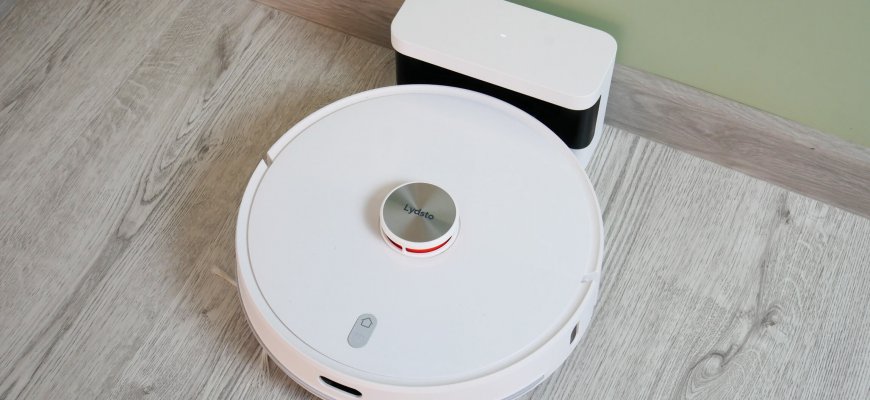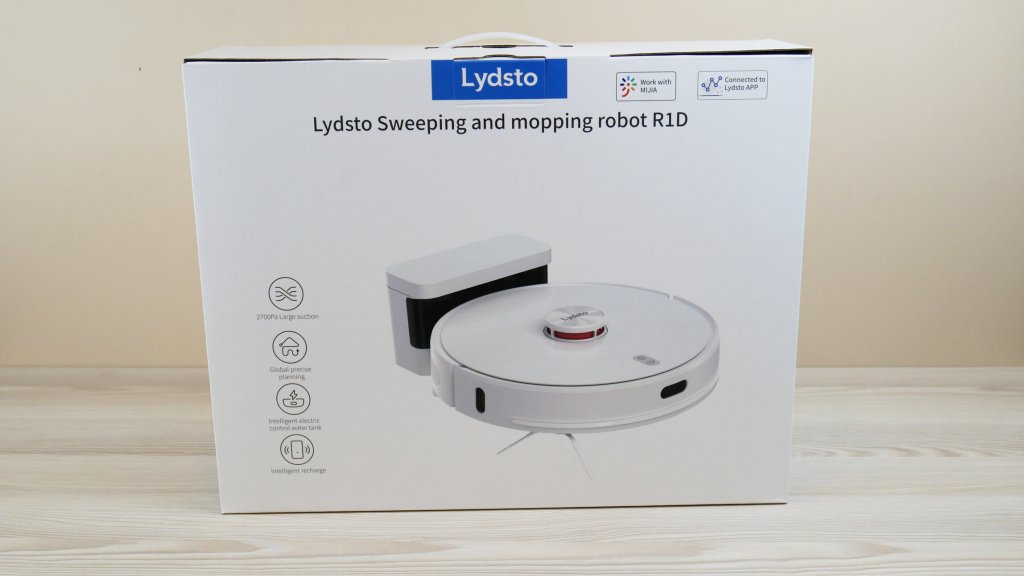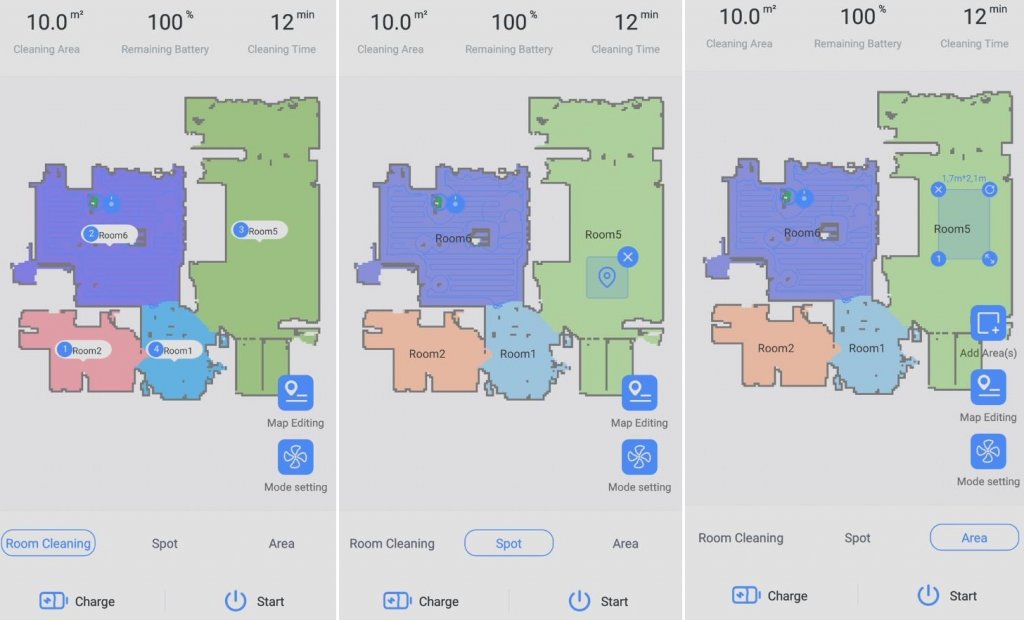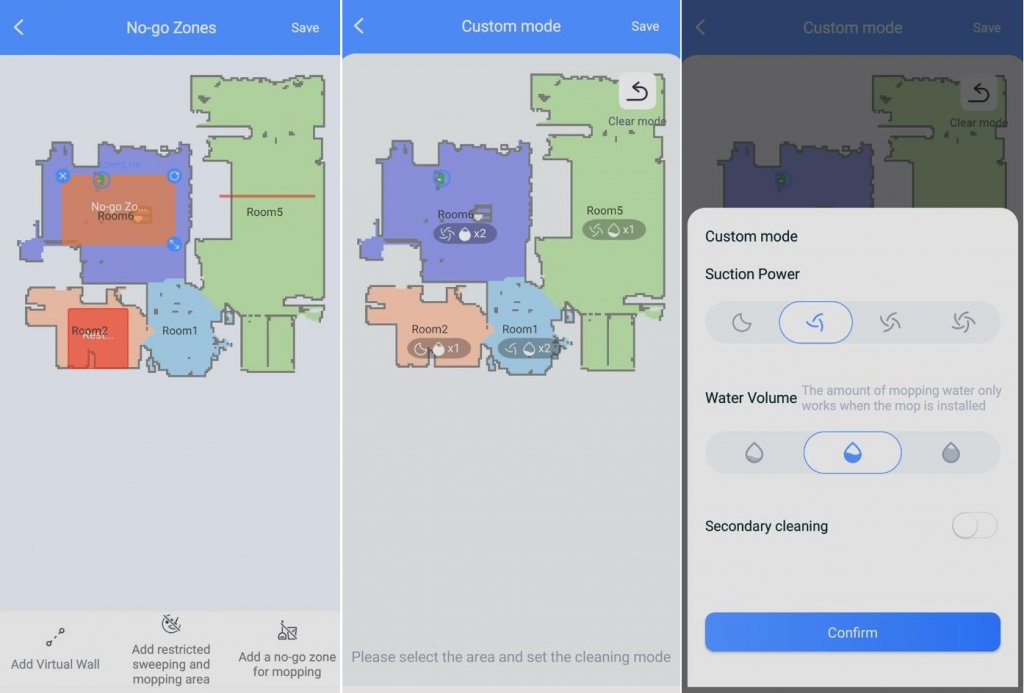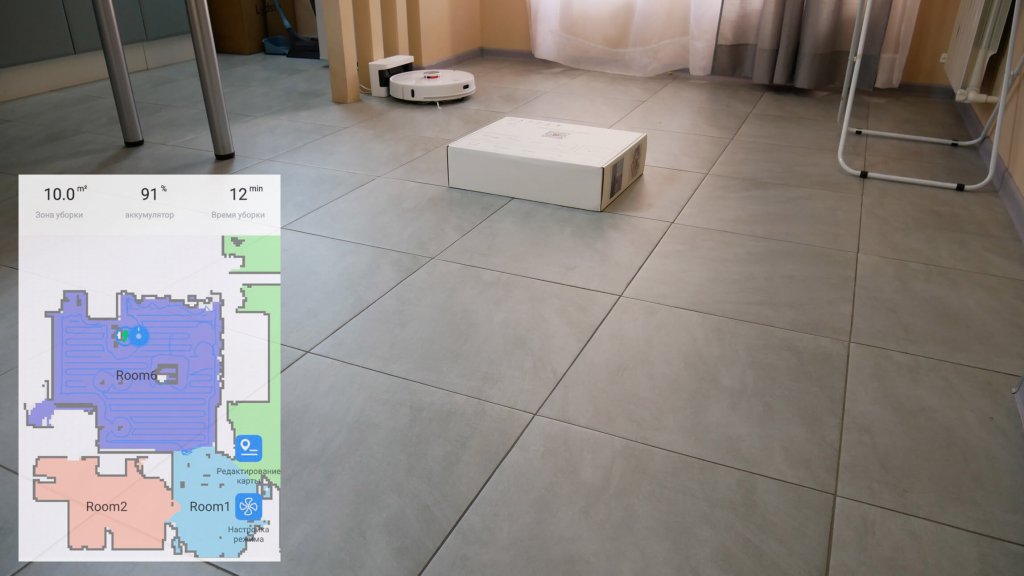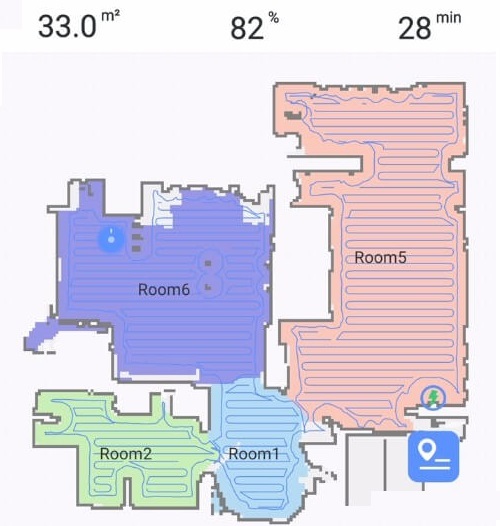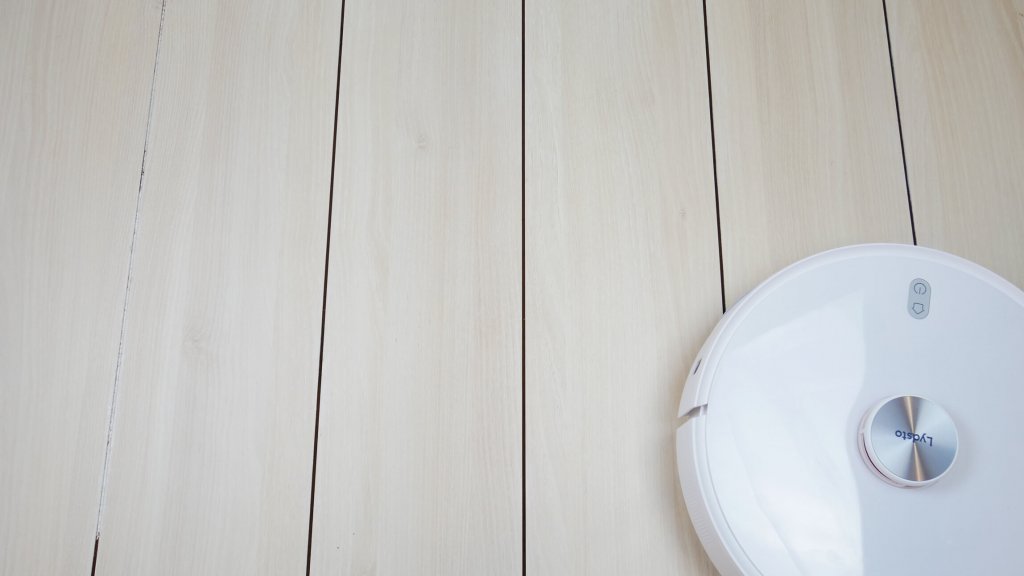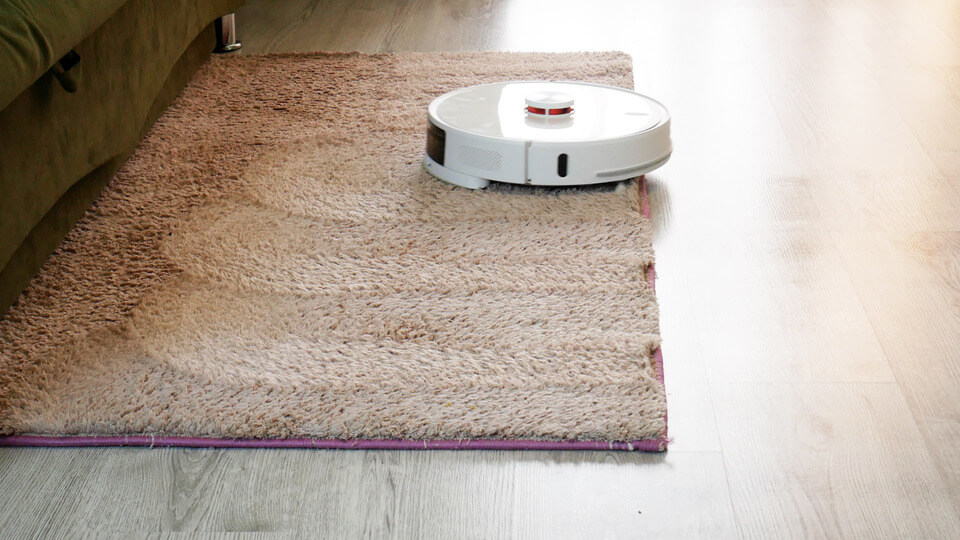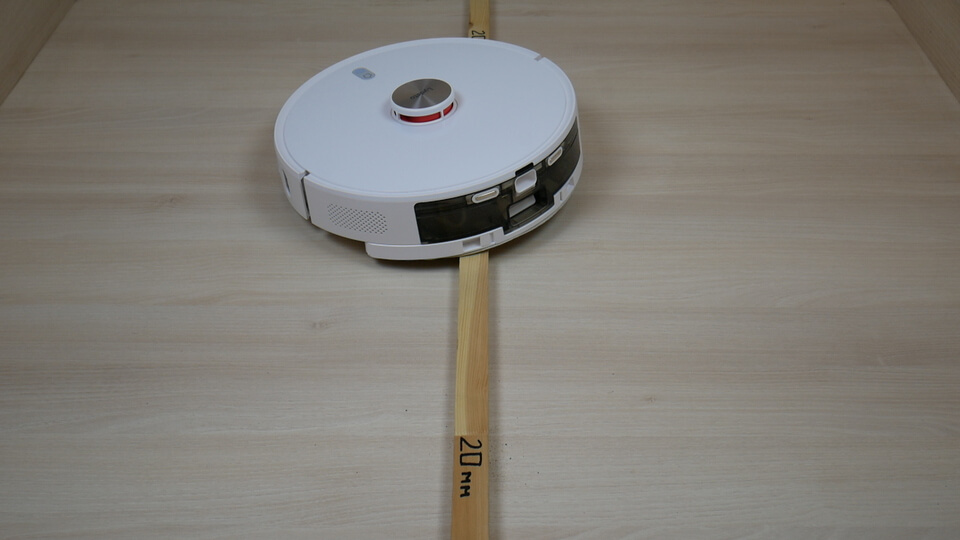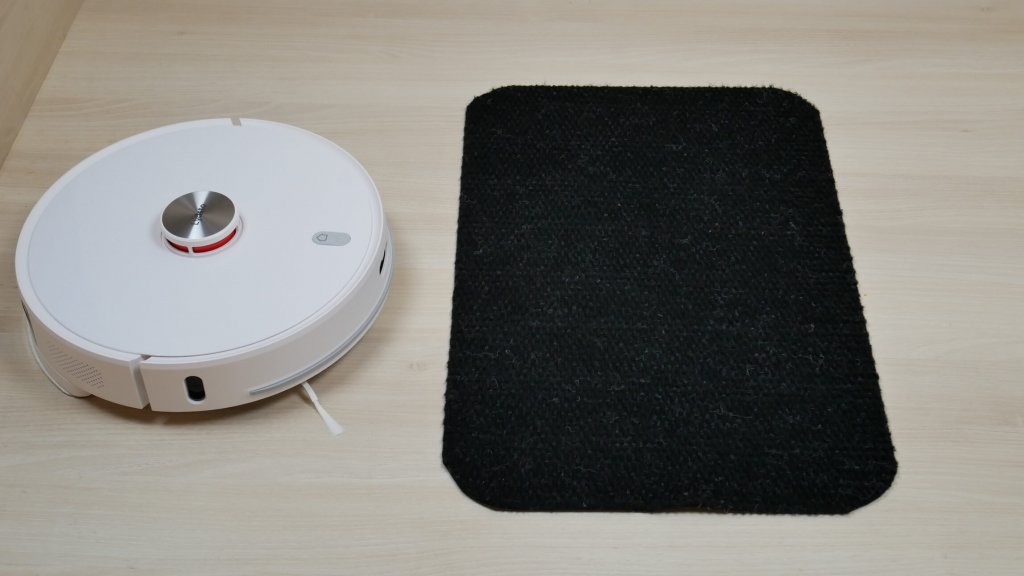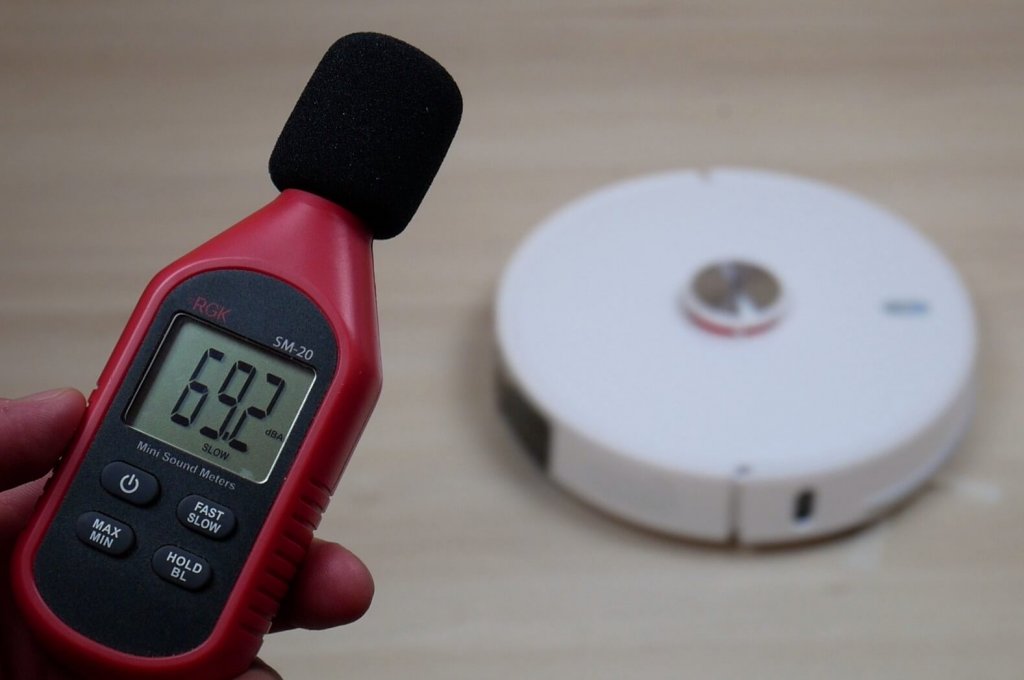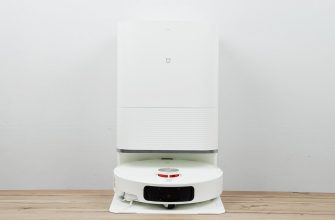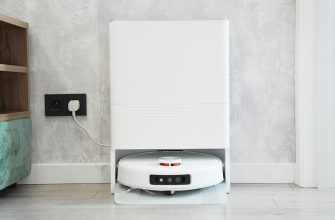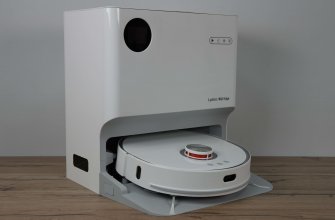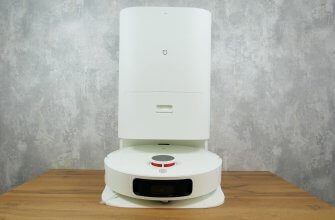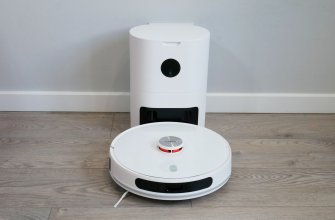Hey guys, welcome to Robotobzor! Today I’ll be reviewing Xiaomi Lydsto R1D, the imporved version of R1, which I had previously reviewed. The main difference between R1D or R1 is the absence of the self-cleaning station. The robot in question comes with a regular charging base. This lowers the price from $450 to $250-$300. So what does the price bring? It offers a robot vacuum cleaner with lidar, dry and mop cleaning, and lots of functions embedded in the app. Next I will do a detailed test of Xiaomi Lydsto R1D, after which I will give my opinion on whether or not this robot is right for you, as well as its pros and cons. I would appreciate it if after watching you would subscribe and like to support the channel. And so, let’s get rolling!
Package
The robot came in this box:
Aside from the robot itself the box includes:
- Charging base.
- Power cord.
- An attachment for mopping with an installed microfiber cloth.
- Manual for operating the vacuum in english.
- 10 single use wipes for mopping.
- And a tool for cleaning the vacuum.
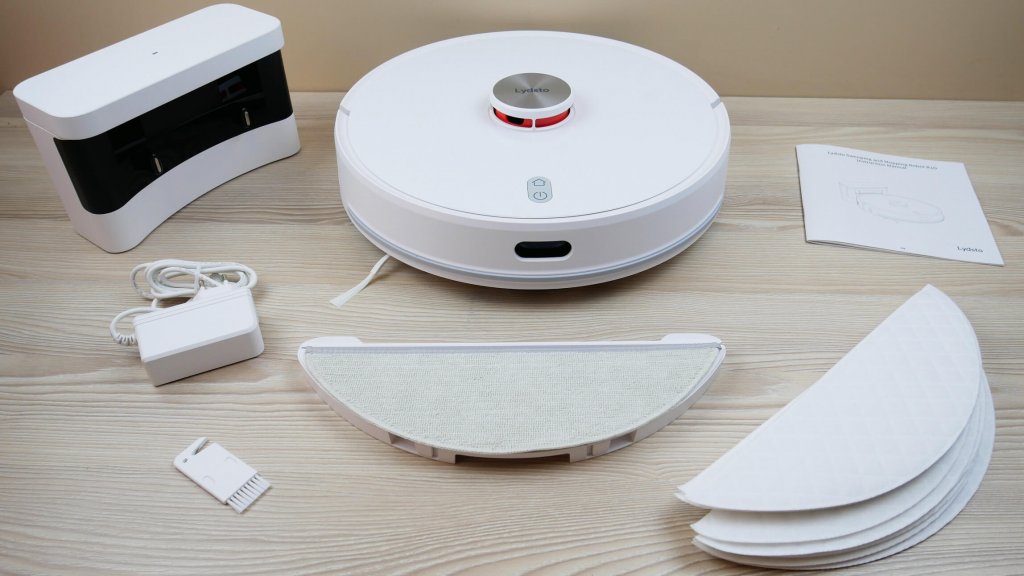
You can say that this is a pretty standard film. There are no extra side brushes or Hepa-filters.
Design
Now, let’s look at how Lydsto R1D is built. It’s round and comes in black and white. White is so much more practical, though. Fingerprints and dust aren’t as visible.
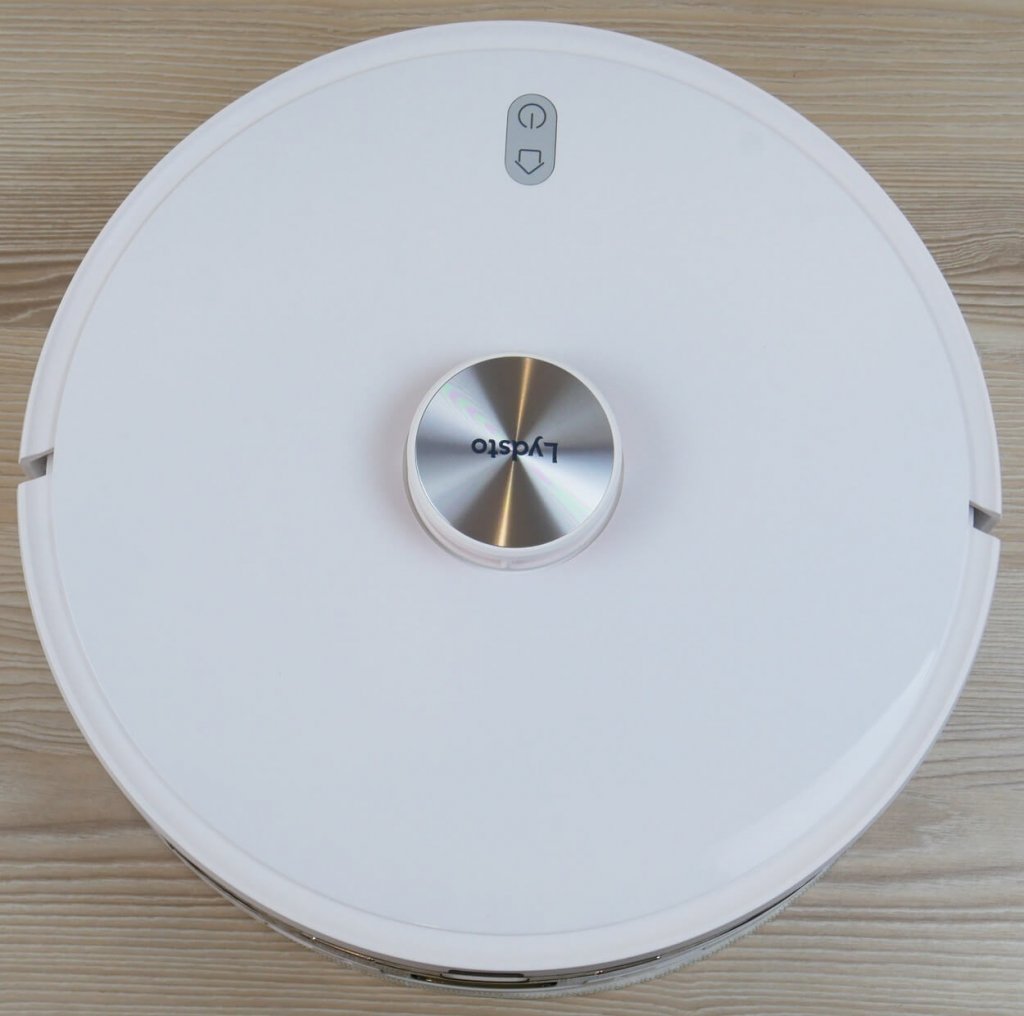
On both sides of the bumper are wall sensors. In the center there is an obstacle sensor. The body stands 98 mm (3.85 inches) off the floor.
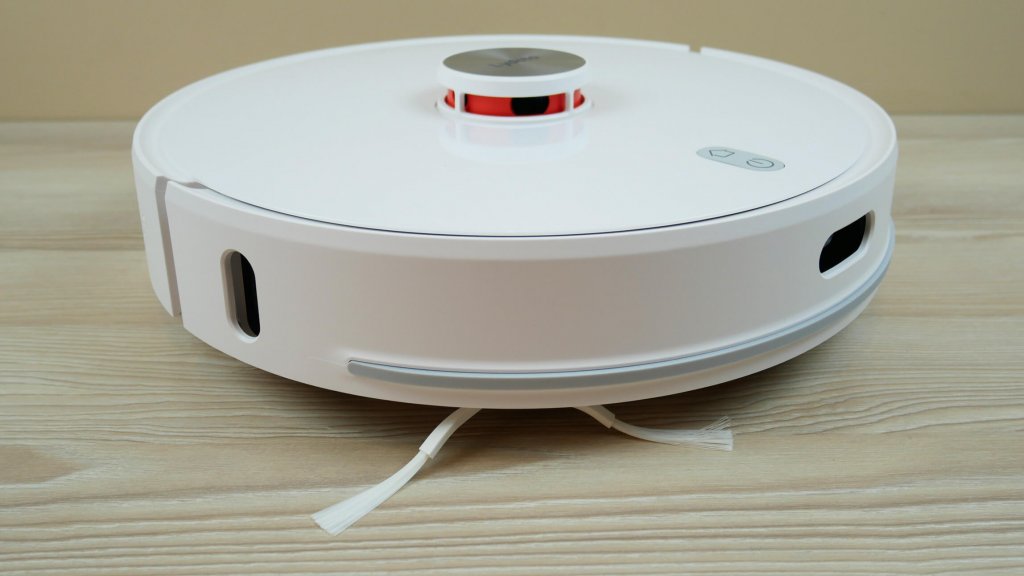

There are two mechanical buttons on the top. It has LIDAR navigation, with a mechanical button to stop it from getting stuck under furniture. The conjoined container for water and dirt is installed at the back. On it we see the curtain for the dust collector and the charging ports. The dirt container holds up to 300 ml (10.1 Oz) of dry dirt. It has a triple filtration system: mesh, foam and HEPA filter. The water tank holds 250 ml (8.45 Oz) of water. There is a pump inside for electronic water monitoring.

The bottom of the container is attached to the cloth. The cloth is attached to the nozzle with Velcro and slides, which is very convenient.
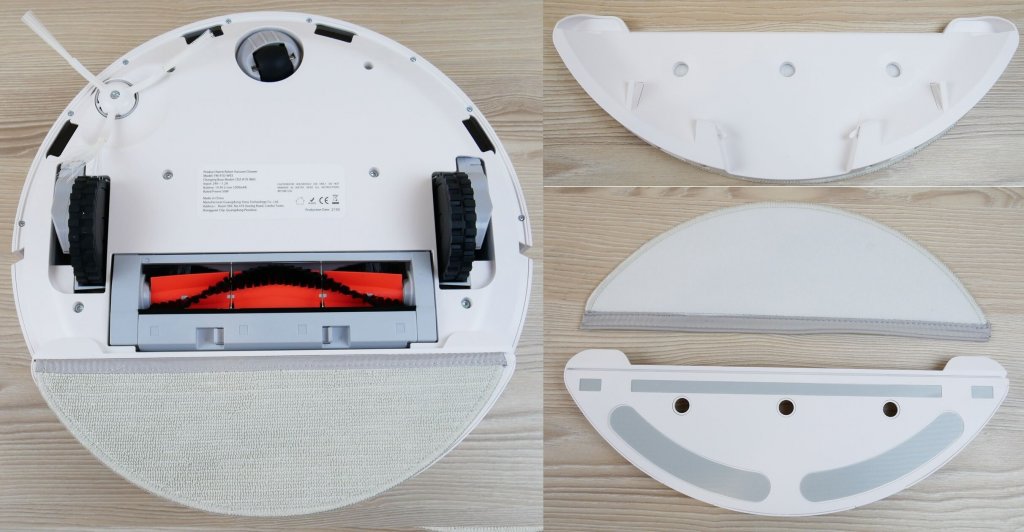
There are 4 sensors on the bottom to stop it from falling. There is only one three beamed side brush, which can be attached with a screw.
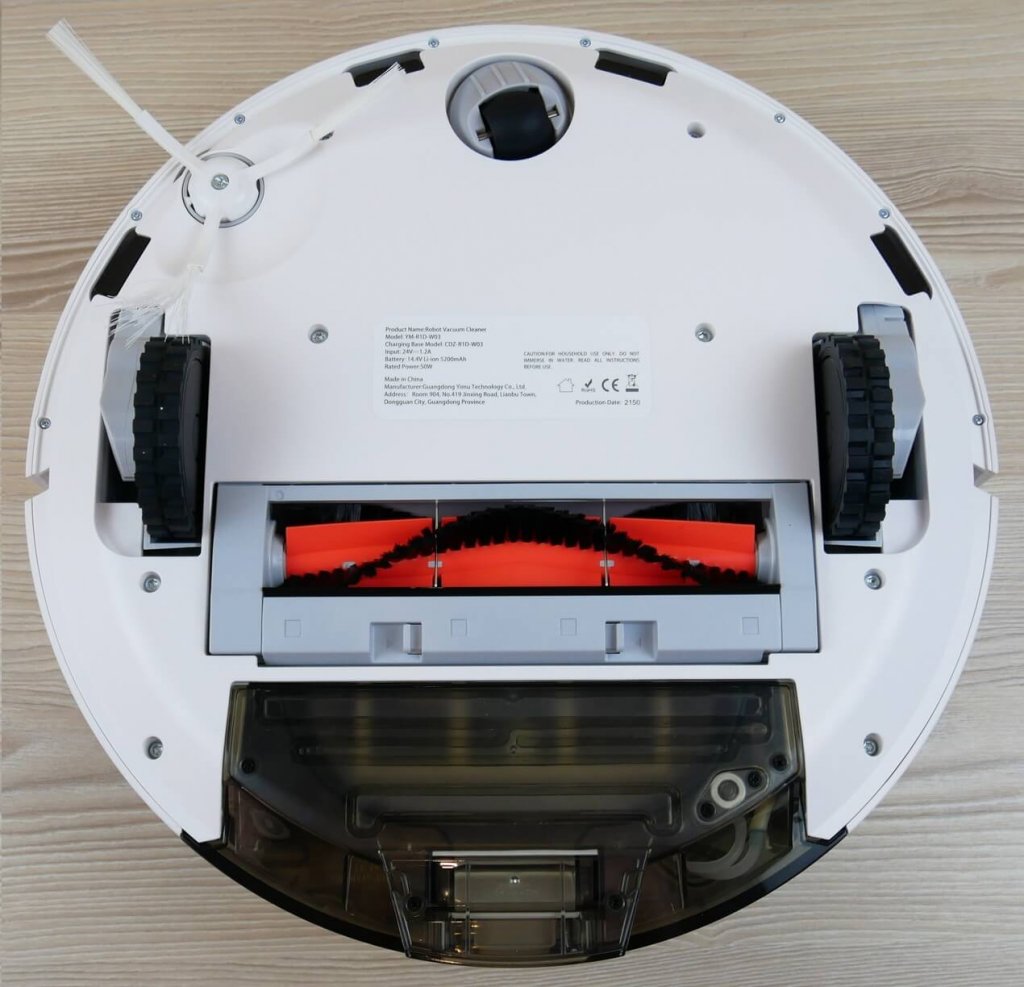
The central brush has bristles, and can be disassembled from both sides to clean from hair and fur. It’s also important to note that the center brush is fluid, which is a plus.
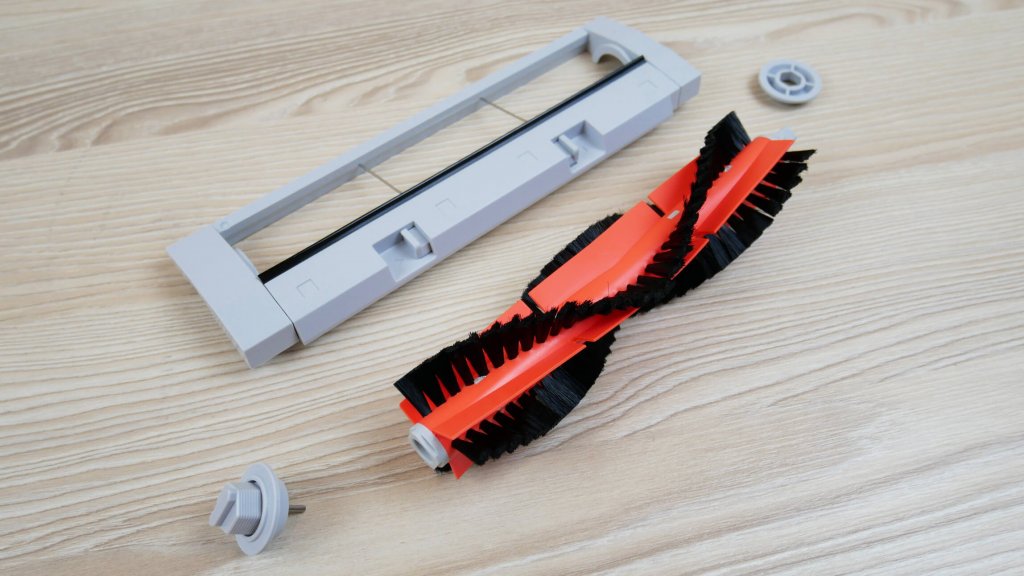
The plastic is high grade, there’s no sloppy placement with higher or lower ridges. And considering the price, that’s pretty cool! Here, I’d just like to pay special attention to the self-cleaning. The container’s design allows the robot to clean itself, but here I tried to combine it with the station from an older Lydsto S1, which I had also reviewed, and here’s what happened. The robot was able to charge at the station and return to it, but the function is not set in the algorithm, and so it doesn’t appear in the app. I hope that this will be updated, and it’ll be possible to order a self-cleaning station, upgrading from Lydsto R1D to R1.
Technical features
Lydsto R1D’s main characteristics, given by the manufacturer, are up on the screen. I recommend pausing to read all of the info:
- Battery Li-Ion 5200 mA*h.
- Suction power up to 2700 Pa.
- Battery life up to 150 mins.
- Cleaning area up to 200 sq.m (656 sq.f).
- Dirt container 300 ml (10 Oz).
- Water container 250 ml (8.45 Oz).
- Obstacle size up to 20 mm (.78 inches).
- Size: 350*98 mm (13.7×3.85 inches).
All in all, the characteristics are pretty standard, at least for a modern LIDAR vacuum at least. Let’s move on!
Functionality
Let’s move on to Lydsto R1D’s functions. Currently, the vacuum can only be controlled through the Lydsto app. Connecting to Mi Home isn’t possible. However, devs stated that work is already underway!
On the main screen, the robot builds a map of the room and automatically zones it into rooms. Under the map there are three basic cleaning modes: room cleaning, where you can set the order you want the rooms cleaned in. Also, you can select a point on the map where R1D should clean, or just put rectangular cleaning zones.
The map editor lets you set up virtual walls and no-go zones, and even separate zones for mopping. Additionally, you can edit room boundaries and even turn on user mode. I’ll elaborate. For each room you can individually set the suction power, the amount of water the cloth gets, and the number of passes by the robot: one or two, which is great. It’s also worth noting that Lydsto R1D is able to save multiple maps.
You can adjust the suction power for auto cleaning mode of cleaning the entire available area, the amount of water the wipe gets, and you can select the floor wash mode and the user mode. Speaking of the floor wash mode, it doesn’t move in a Y-shaped pattern like I expected, it just stops suction during mopping.
In the settings, you can set a cleaning schedule by selecting the time, days of the week, rooms, and even user settings. There’s also manual control and voice alerts.
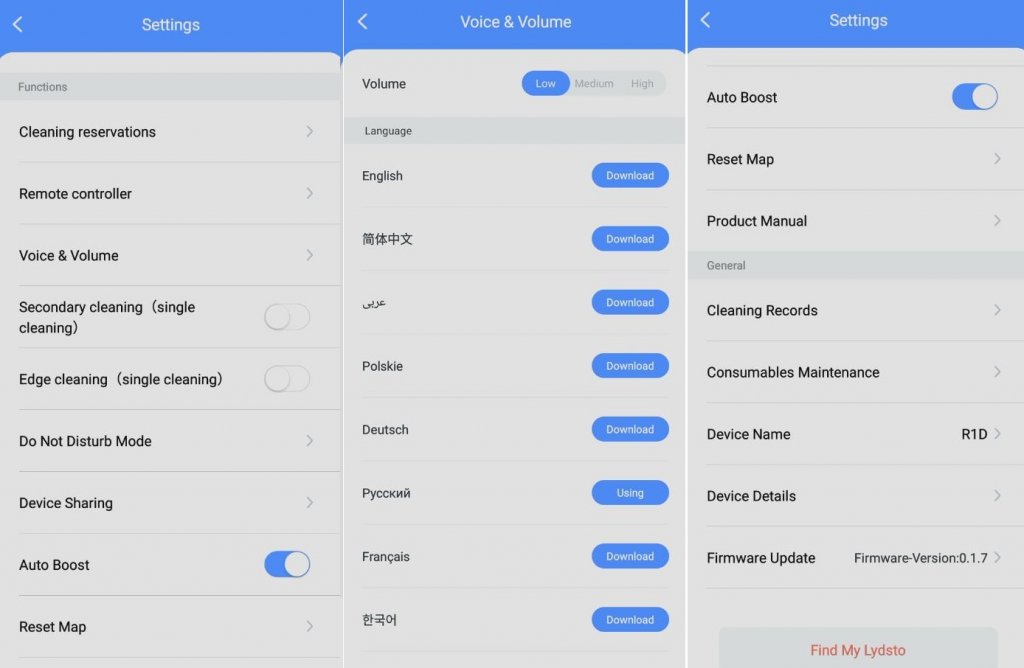
In addition, it offers to double pass the entire available area, additionally bypass the room perimeter after its main cleaning, set do not disturb times, share controls with others, enable auto power increase on carpets, view the cleaning log, check the water level, and, if necessary, update the app to it’s latest version.
Lydsto R1D’s functions are pretty decent and let you flexibly adjust your robot’s cleaning to how you like it. Which is pretty great!
Testing
Review:
Navigation
And finally let’s move on to the tests. First, we’ll test the navigation in a room with obstacles. First the vacuum passes along the perimeter, then it cleans it in a snake like pattern. The drying rack’s legs didn’t cause any problems. Separately, the robot swept around the legs of the chair and box, then returned to the base for charging. The test was successful!
As for the rest of the house, Lydsto R1D goes room by room along the perimeter, then in a snake like pattern. It cleans fast, and there aren’t any dirty areas left. The navigation is good.
Suction power
Lydsto R1D’s suction power, on the other hand, is pretty average. It was only able to suck dirt out of a 2 mm (.078 inch) slot. But even this is enough to automatically keep the house clean. Especially if there are few or no carpets on the floor.
Hard floor vacuuming
The vacuuming quality on hard floors is good. The robot was able to pick up most of the dirt from the floor. And this isn’t just small household debris, but also hair and fur. There was only some dirt left in the corners, which most round robots can’t get. Some of the wool and hair did get caught up by the center and side brush. Overall though, the test was a success!
Carpet cleaning
I scattered the same dirt on the carpet. Surprisingly, Lydsto R1D did a great job cleaning it. All the dirt was picked up. It passed the test with flying colors!
Mopping
I’ve no complaints about the mopping either. It scrubbed the dirt off the floor as well as its competitors. Only one strip along the baseboard remains, but this is the achilles heel of all robot vacuum cleaners that I’ve reviewed so far.
It’s also important to note that Lydsto R1D is capable of vacuuming and mopping simultaneously, which is great!
Mopping on carpets
As for mopping on carpets, although Lydsto R1D detects carpets and automatically increases the suction on them, it doesn’t bypass them while mopping. The water supply also doesn’t stop when it runs into the carpets. This is worth keeping in mind.
Passage of obstacles
As for obstacles, Lydsto R1D is able to move over 2 cm (.78 inch) thresholds, even with the cloth nozzle installed. So it’s really good going over objects!
Passage of dark surfaces
Unfortunately, the robot is scared of dark spaces, like most Xiaomi robots. This is a depressing disadvantage.
Volume
And finally, let’s measure Lydsto R1D’s volume in different modes. At min power the noise level is around 61-62 dB. In standard mode it can reach 63 dB. In the strong mode the noise level went to 65 dB, and at max it peaked at 69 dB. The volume is quite standard.
Summing up
Xiaomi Lydsto R1D was thoroughly reviewed and tested. Our algorithm scored it at 68 out of 100 points. This is on the same level of most other lidar vacuums, some of which cost much more. In the description I put links to the evaluation algorithm and the overall ratings of all of the robots we had previously tested. Now, I’ll share my opinion. I liked the following:
- Good navigation.
- Simultaneous mopping and vacuuming.
- Quality cleaning on multiple surfaces.
- Large amount of functions for flexible adjusting your robot’s cleaning.
- Automatic power increase on carpets.
- Can conquer 2 cm (.78 Inch) obstacles.
- Reasonable price for a LIDAR vacuum.
Speaking of disadvantages, it’s worth highlighting the hopefully temporary loss of connection to the Mi Home app, and fear of dark surfaces.
All in all, the robot vacuum cleaner left a mostly positive impression, and if it will be possible to connect it to a self-cleaning station in the future, it will be even better. But even now, given the functionality, cleaning quality and design of the robot, we can confidently say that it’s worth its money. The manufacturer managed to collect all the most important parameters, including the accurate navigation, while keeping the price within $300. With such a budget, I definitely would recommend it.
On this note, I’d like to end the review. Leave any questions you may still have in the comments down below. Have fun shopping, bye!

